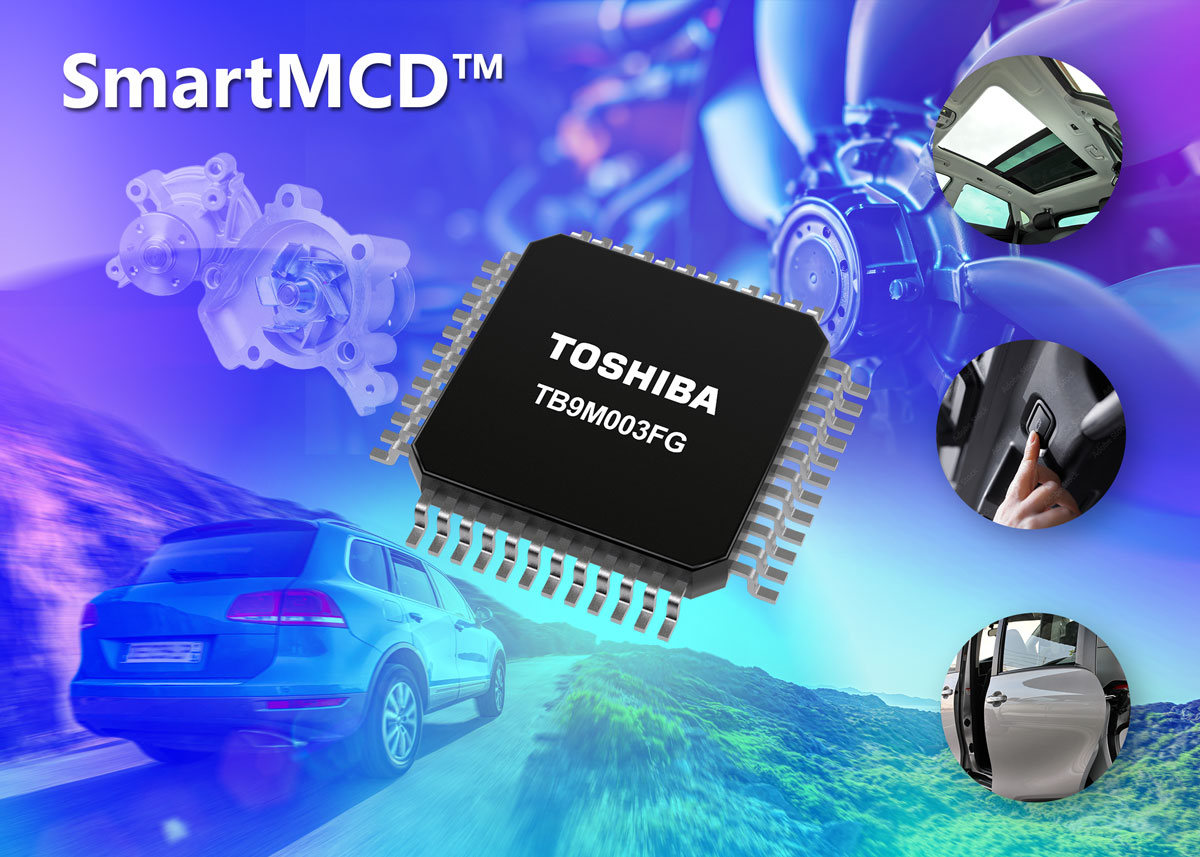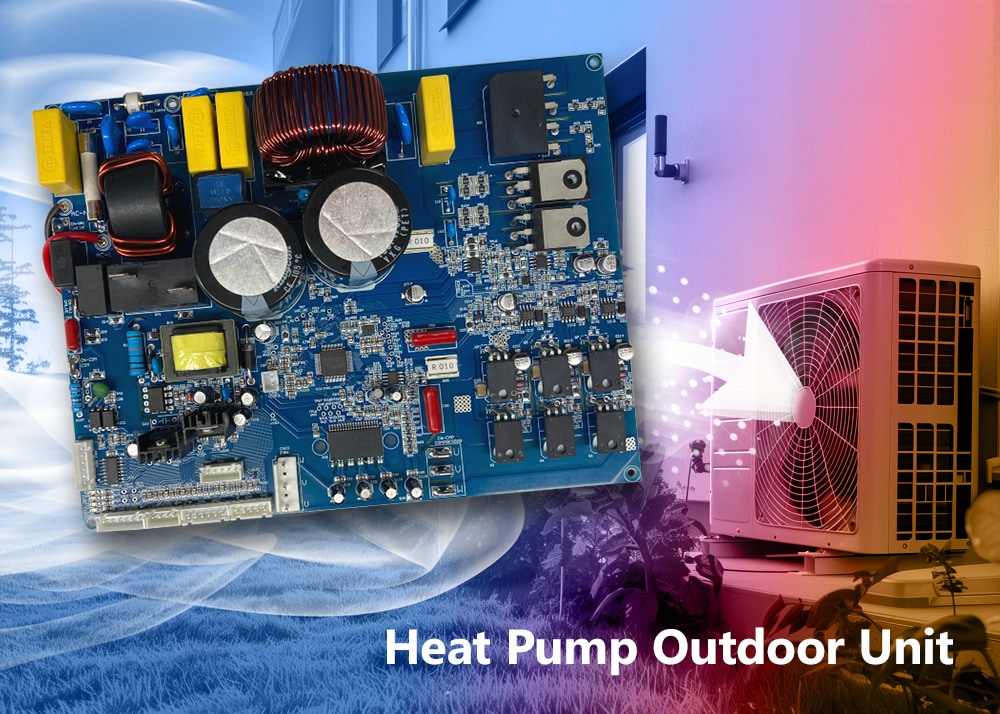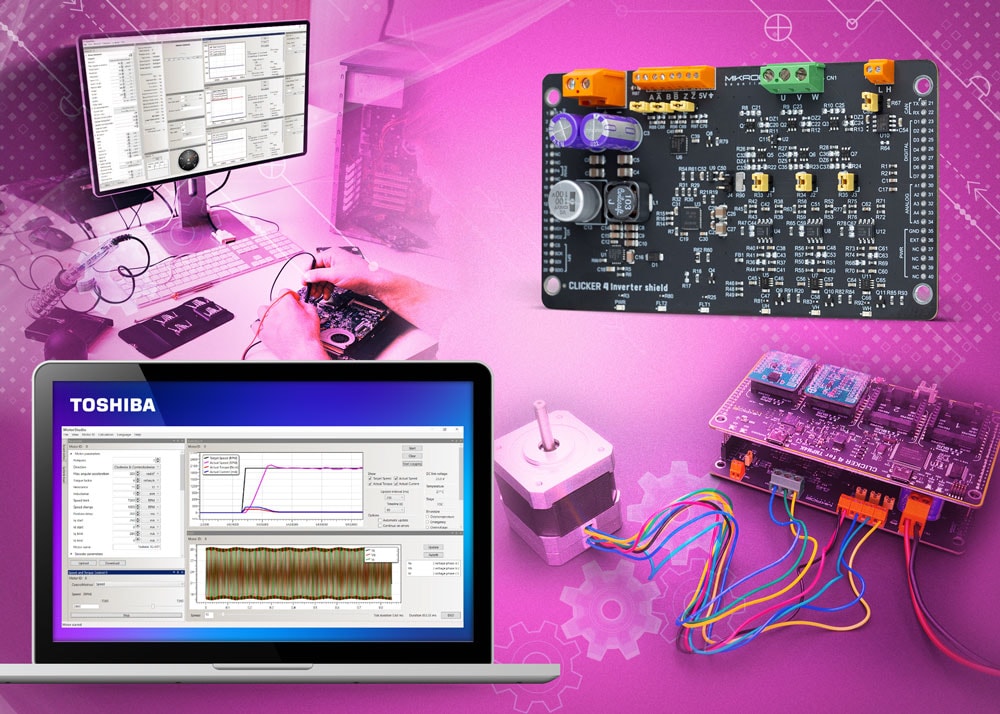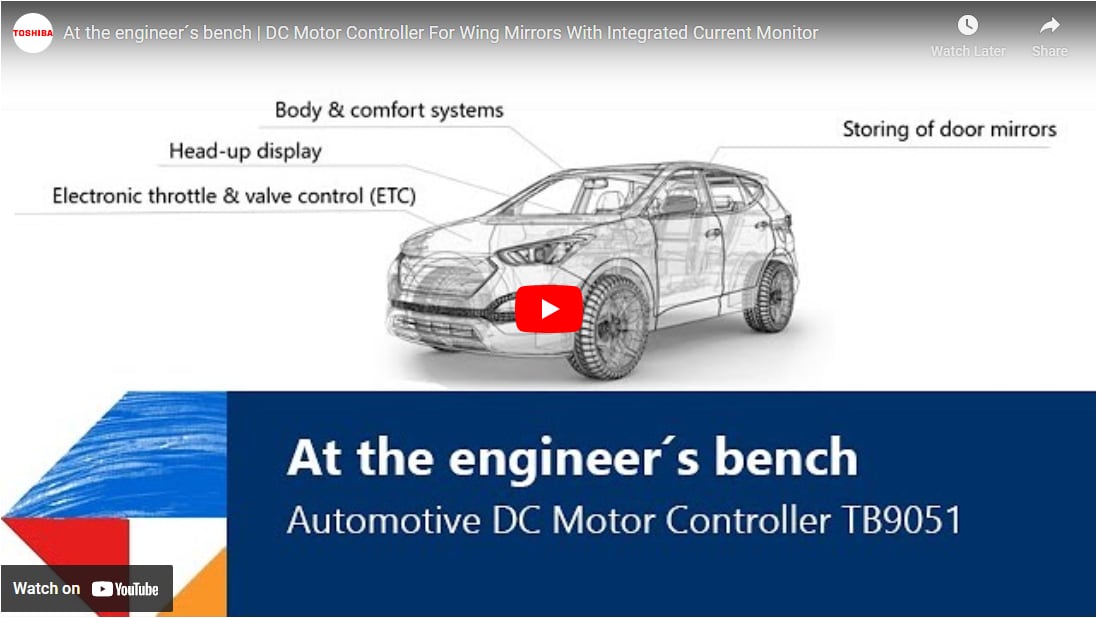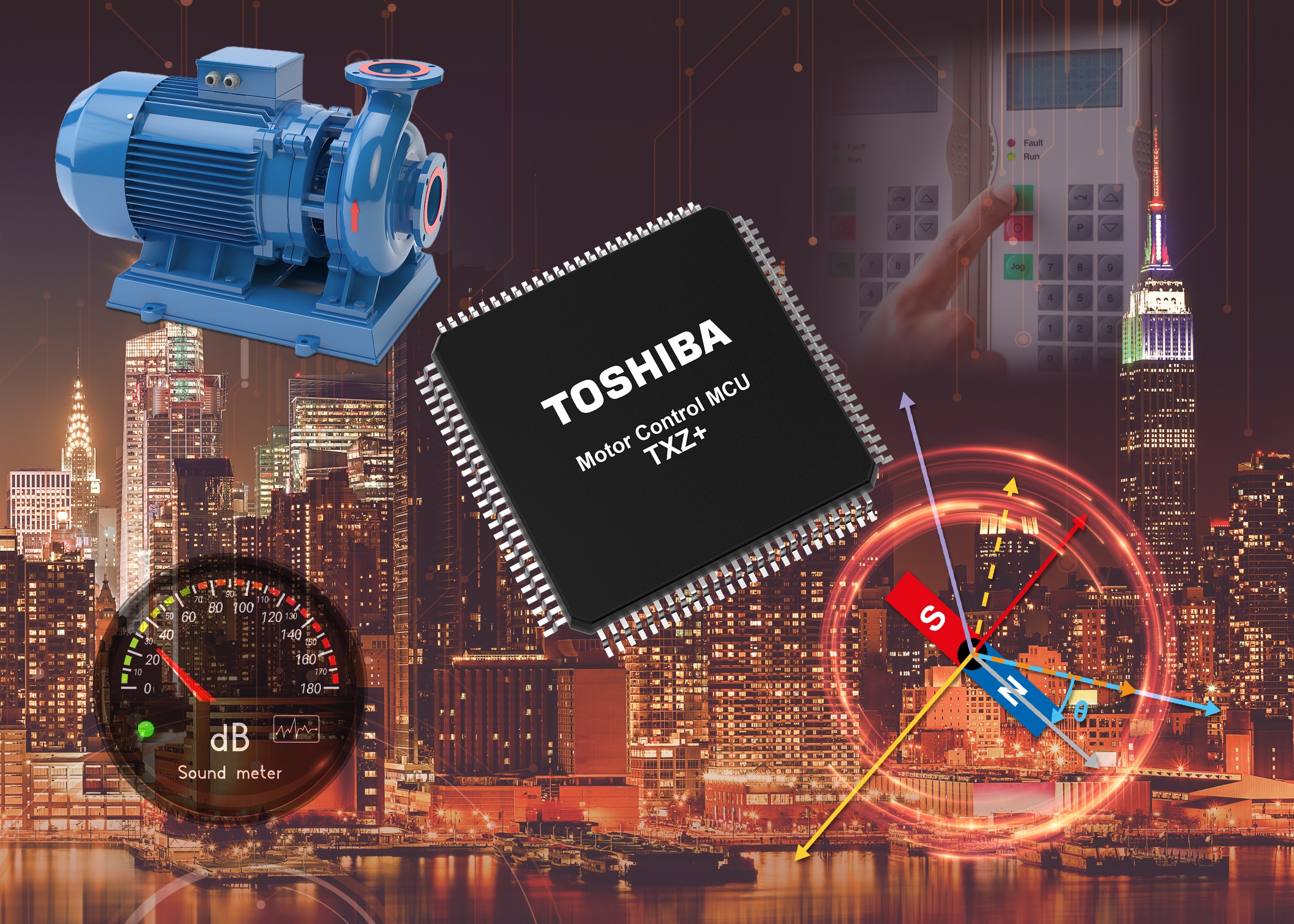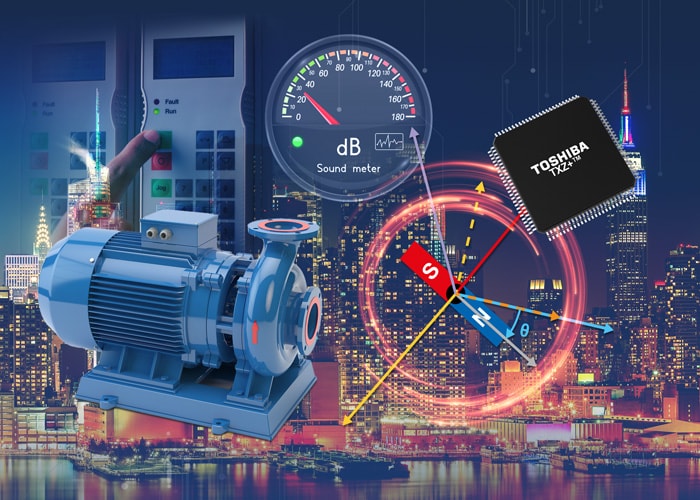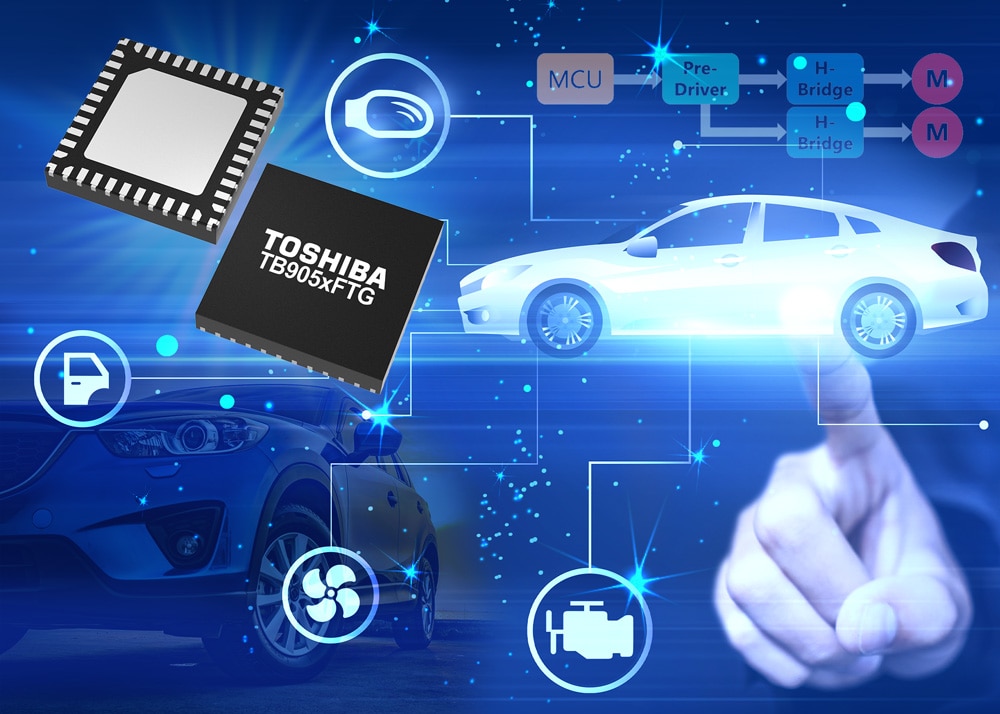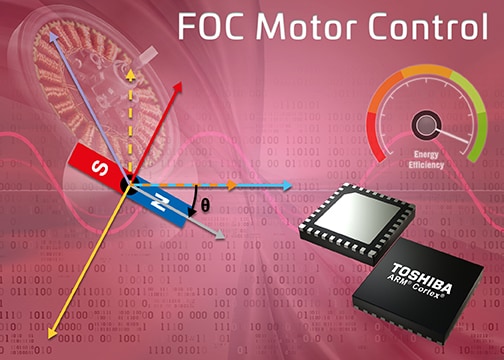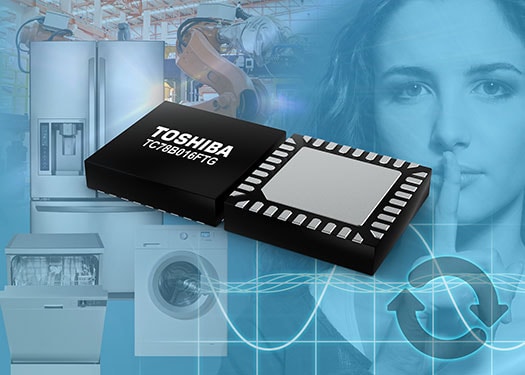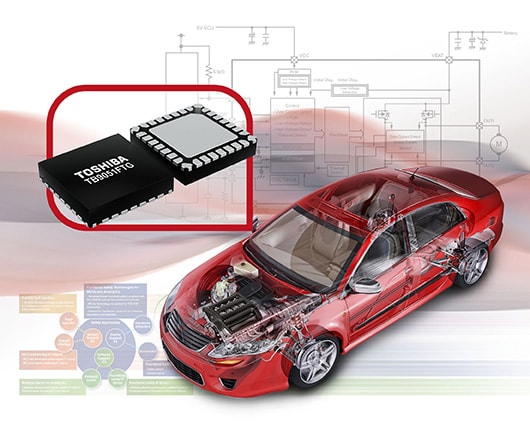- General Top
- SEMICONDUCTOR
- STORAGE
- COMPANY
-
My ToshibaSemicon
- Semiconductor Top
-
ApplicationsAutomotive
Body Electronics
xEV
In-Vehicle Infotainment
Advanced Driver-Assistance Systems (ADAS)
Chassis
IndustrialInfrastructure
BEMS/HEMS
Factory Automation
Commercial Equipment
Consumer/PersonalIoT Equipment
Healthcare
Wearable Device
Mobile
Computer Peripherals
-
ProductsAutomotive Devices
Discrete Semiconductor
Diodes
Transistors
Logic ICs
Analog Devices
Digital Devices
Wireless Devices
※
: Products list (parametric search)
Power SemiconductorsSiC Power Devices
※
: Products list (parametric search)
Isolators/Solid State RelaysPhotocouplers
Digital Isolators
Solid State Relays
Fiber Optic Transmitting Modules
※
: Products list (parametric search)
MOSFETsIGBTs/IEGTsBipolar Transistors※
: Products list (parametric search)
Diodes※
: Products list (parametric search)
MicrocontrollersMotor Driver ICsIntelligent Power ICs※
: Products list (parametric search)
Power Management ICsLinear ICs※
: Products list (parametric search)
General Purpose Logic ICsLinear Image SensorsOther Product ICsOther Product ICs
※
: Products list (parametric search)
-
Design & Development
Design & Development
Innovation Centre
At the Toshiba Innovation Centre we constantly strive to inspire you with our technologies and solutions. Discover how to place us at the heart of your innovations.
-
Knowledge
Knowledge
Highlighted Topics
Further Materials
Other
- Where To Buy
- Part Number & Keyword Search
- Cross Reference Search
- Parametric Search
- Stock Check & Purchase
This webpage doesn't work with Internet Explorer. Please use the latest version of Google Chrome, Microsoft Edge, Mozilla Firefox or Safari.
require 3 characters or more. Search for multiple part numbers fromhere.
The information presented in this cross reference is based on TOSHIBA's selection criteria and should be treated as a suggestion only. Please carefully review the latest versions of all relevant information on the TOSHIBA products, including without limitation data sheets and validate all operating parameters of the TOSHIBA products to ensure that the suggested TOSHIBA products are truly compatible with your design and application.Please note that this cross reference is based on TOSHIBA's estimate of compatibility with other manufacturers' products, based on other manufacturers' published data, at the time the data was collected.TOSHIBA is not responsible for any incorrect or incomplete information. Information is subject to change at any time without notice.
require 3 characters or more.
Essential Electronics - The H-bridge Motor Controller
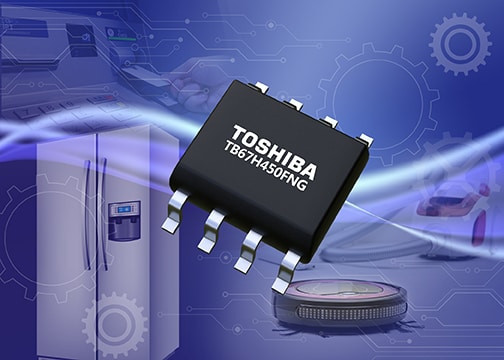
When there are heavy loads (such as motors) incorporated into a circuit, it is not possible for them to be powered directly from the pins of a standard system microcontroller. Instead the microcontroller will be used to control appropriate driver circuitry.
H-bridge drivers are a long established means for enabling bidirectional motor driving. By using one, rotation of the motor can be driven, and the polarity of the supply to the motor can be swapped in order to change the direction of rotation. It can also take care of braking, when this is required.
The basic concept of an H-bridge is fairly simple to grasp. It consists of an arrangement of four switches (usually in the form of MOSFETs). By activating one pair of diagonally-opposed switches, the motor can be driven in one direction (clockwise). Conversely, activating the other pair of diagonally-opposed switches allows the motor to be driven in the opposite direction (anti-clockwise). A pulse width modulated signal is used to control the speed at which the motor runs. Freewheeling diodes are included to prevent fly-back voltages damaging the MOSFETs if the motor is brought to a sudden stop.
Thanks to its TB67H450FNG device, Toshiba is continuing to progress the H-bridge motor driver. This means that H-bridges will continue to be a part of yet another era of electronic design. Supplied in a space-saving 8-pin SOP package, the TB67H450FNG presents a highly compact solution. Nevertheless, it has the ability to provide high degrees of torque.
By leveraging the company’s proprietary BiCD silicon process (where bipolar, CMOS, and DMOS technologies are all integrated together), the TB67H450FNG possesses significantly heighted performance parameters. The maximum current and voltage levels that can be supported by this device are 3.5A and 50V respectively. It can be used to drive a brushed DC motor, or multiple devices can be combined together in order to drive a stepper motor. Among the applications that this H-bridge motor driver is suitable for are point-of-sales (PoS) units, small-scale domestic appliances, air conditioning systems and electronic door locks. As they draw a standby current of just 1µA, they are very well suited to deployment in battery-powered systems.
Since the pre-driver stages have been directly integrated into this device, it dispenses with the need to take care of such functionality via external components - thereby minimising the PCB real estate needed and also keeping the bill of materials count down. There are four different operation modes - namely Forward, Reverse, Brake and Stop. An array of protection mechanisms enables the proper function of this device over a long working lifespan by turning off the integrated MOSFETs if certain parameters are exceeded. These protection mechanisms include thermal shutdown, over-current detection (if 4.9A is reached) and under-voltage lock-out (should the supply drop below 4V).
Toshiba has published a white paper about H-bridge motor control which you can download here:


